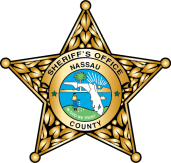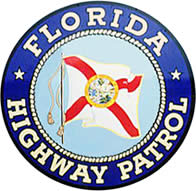Sheriff: Historic low for traffic fatalities in Nassau
Yulee, Fla. – Sheriff Bill Leeper announced today that traffic fatalities for Nassau County reached an all-time low during 2013. Leeper said there were a total of eight traffic fatalities during 2013 (down from eleven in 2012), which is the lowest number in over 31 years. The previous fewest number of traffic fatalities in Nassau County was nine during 1991, with the highest number being twenty-eight in 1998. Of the eight fatal crashes in 2013, 37% were alcohol related.
Sheriff Leeper said the Nassau County Sheriff’s Office development of enhanced safety education efforts through their public outreach programs, a strategic and concentrated traffic enforcement program, and working with state and local traffic engineers to improve roadway safety & design has contributed to this historic low, as well as better vehicle technology and safer drivers.
NCSO works with state and local law enforcement agencies and organizations like Mothers Against Drunk Driving, the Nassau County Community Traffic Safety Team, Florida Sheriff’s Task Force and others to make sure Nassau County remains as safe as possible.
“Last year’s significant drop in traffic fatalities is welcome news and it proves that we can make a difference,” Sheriff Leeper said. “Still, too many of our friends and neighbors are killed in preventable roadway tragedies. We will continue doing everything possible to encourage drivers to put safety first.”
With a significant increase of cars and trucks on our roadways, all drivers must be careful especially in and around intersections. “If drivers follow the rules of the road and apply common sense while behind the wheel, they will lessen their chances of being in an accident,” said Leeper. “Just about everyone you talk to has been involved in a collision sometime in their life, but we want to reduce those numbers even further. It’s important that the citizens of Nassau County remain safe while driving, as well as others who visit or work here.”
Reminders of how you can reduce your chances of being a crash victim:
Buckle Up
Seat belt use is the single most important factor in preventing or reducing the severity of injuries to vehicle occupants involved in a traffic crash. It takes less than two seconds to buckle up. Make it a habit.
Steer with a Clear Head
Driving while drowsy–whether due to a lack of sleep, the effect of even a small amount of alcohol, or the use of a prescription drug or over-the-counter medication–can delay reaction time, decrease concentration and reduce judgment skills. Make sure you are alert before getting behind the wheel.
Drive Distraction-Free
Driving distraction-free means actively scanning the road ahead and the driving environment surrounding your vehicle, keeping your hands on the wheel and your mind on driving. Because cell phone use occurs with such frequency and duration, it’s more likely to lead to a crash than other forms of distraction. Before you drive, take a moment to think of those who are counting on you to get home safely every day. Then turn your phone off.
Parking and Backing Basics
Parking lot incidents are typically low-speed collisions, but can still lead to property damage and injuries. Safety experts recommend backing into a parking space rather than pulling in. This way, your vehicle is facing out when it’s time to exit. If you must back out, complete a vehicle walk-around to check for children and objects. Once all is clear, make your exit promptly and cautiously as conditions may change.
Fine Tune the Fundamentals
Being rear-ended and rear-ending another vehicle are two of the most frequent types of crashes. To avoid these common collisions, always leave at least 3-4 seconds of distance between your vehicle and the one in front of you. If the roads are wet or slippery, double you’re following distance.
The Nassau County Sheriff’s Office encourages all motorists to practice safe driving habits in 2014, so that together we can continue to reduce the number of traffic crashes.
Please visit the Sheriff’s Office website at www.nassauso.com for additional safety information.



